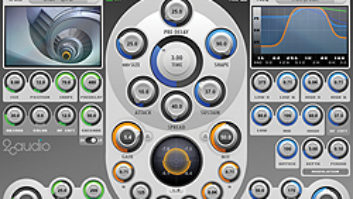Waves’ Restoration Bundle is a collection of four DSP plug-ins that is notable both for its quality and its ease of use; the processors do their work with a minimum of user interaction. With only a handful of para-meters to tweak and a full complement of presets, you certainly don’t have to be a techo-weenie to obtain quite usable results from the Restoration Bundle. But there are a few simple pointers that can help you get the most out of these tools.
VIVA LA DIFFERENCE
The key to successful single-ended noise reduction is deciding how far to go. No matter how optimally you’ve set the parameters, no matter how good these processors are at avoiding artifacts, if you get too aggressive, you’ll eventually start filtering out good audio along with the bad. In addition, the filters used in these processors are extremely sharp by design, and steep filters ring more than gentle ones.
That’s where the Difference monitoring switch found in all but x-Hum is helpful. This wonderful feature lets you “solo” the audio you’re removing; if you hear program along with the noise, then you’re probably throwing out the baby with the bathwater. I’d go as far as to suggest that Difference should be the default monitoring mode, because it’s much easier to adjust these processors while you’re listening to what’s being removed.
X-HUM IS JUST AN X-AMPLE
There’s nothing that dictates that precise, programmable filters like these must be used to filter out “noise”; they can also be used quite successfully to remove or at least reduce levels of things like wrong notes. x-Hum is much better than simple EQ at removing wrong notes in that it’s designed to track the harmonics of the AC line’s fundamental frequency of 60 Hz (50 Hz in some parts of the world) up the series.
But you can set the fundamental frequency as high as 400 Hz, and it can even work on sounds an octave higher (although less effectively, because the harmonics are displaced). The less clangorous the sound, i.e., the closer its harmonics fall in line up the series, the better x-Hum works in this application.
Instead of the Difference monitoring mode found in the other plug-ins, x-Hum has a Reverse button. This is just like boosting an EQ while you sweep its frequency to home in on the problem areas you’re going to cut.
But there’s an interesting off-label application for the other Restoration plug-ins’ Difference monitoring mode: extraction. Because you can solo what you’re removing, you can use this feature to grab a sound you want out of the mix. Again, this isn’t a perfect technique, but you can often peel off enough of the background to use sounds that you’ve extracted in unexposed settings.
INTERACTION
The high-shelf control in x-Noise is an important parameter. Those who don’t read manuals carefully might not realize that this control doesn’t affect the program directly but rather the Noise Profile filter that is applied to the program. Again, the effects are easy to hear in Difference monitoring mode; it can be surprising how much more gain reduction you can get away with — or how much less you need — when the high shelf is adjusted optimally.
That applies equally to the time-constant settings (attack and release). Transient passages in the program are going to want the filter to kick in more slowly so that they’re not removed by mistake. If you’re using a host program that can automate plug-in parameters, then the attack time is likely to be the leading candidate for dynamic automation, followed closely by the threshold and/or bypass controls.
Clearly, the Restoration parameters are all highly interactive, and different sections of audio often require different settings. Even if plug-in automation is available, sometimes it’s easier to work section-by-section using a file-based format than to try and catch everything in real time. As a practical matter, it can save the step of having to re-import audio that you’ve bounced to disk through the Restoration plug-ins.
WHEN LOW-RES IS GOOD
So the idea is to use Difference mode and focus on the transients as you tweak. Along those lines, x-Noise has an interesting three-position parameter called Resolution. As explained in the manual, the highest resolution setting uses more DSP than the other two, but it also acts slower and can smear transients.
The subtext here is that “high resolution” means “more filter bands.” And that means that there are more filters with the potential to ring. If you start hearing chirps, then try processing the audio once at low or medium res before running it through again to fine-tune the program at the high-res setting.
With that said, we want to be careful not to dis the high-res setting. All things being equal, having more filters in the learned noise profile translates to more targeted noise removal. Just know that the resolution control isn’t only there to accommodate lower-powered computers.
NOISE: DON’T LEAVE WITHOUT IT
Sometimes it’s hard to find a clear section of steady-state noise for x-Noise to learn and build its filter. If you’re running a recording session with unavoidable noise, for example, when there are hard drives and fans that have to be on, you can borrow a trick from film location recordists who always make sure to record some ambience after the actors are done: The idea is to record some “silence” through all of the open mics in the studio. If an amp isn’t buzzing, odds are that you’ll pick up some hard drives or fans whirring away.
[Eds.: For more Waves Restoration Bundle tips, visitwww.mixonline.com.]
Nick Batzsdorf was the editor of Recording for more than 10 years.




